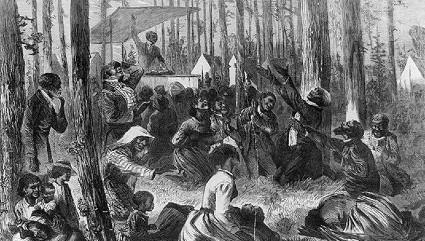Why the Enslaved Adopted the Religion of Their Masters – and Transformed It
The story of early African-American Christianity proves the power of the Resurrection against oppression.
By Dante Stewart

“The Resurrection has proved its power; there are Christians – even in Rome.” This is how Karl Barth, renowned Swiss theologian, described the conversion of the Roman Christians in his famous work The Epistle to the Romans. What he meant was that the resurrection of Jesus Christ had proved its reality because there were, in fact, Christians in Rome, the capital of the oppressive empire whose authority had crucified Jesus, and that was indeed sufficient grounds for thanksgiving and belief.
As I reflected on the words of Barth, I couldn’t help but realize that as he was describing the faith of the Roman Christians, he was also telling the story of black Christianity. The simple fact that the enslaved were able to “hold on” to Jesus, as it were, is in our day a story of the power of the Resurrection. Emerson Powery and Rodney Sadler Jr. shared in their book, The Genesis of Liberation, “African-Americans’ respect for the authority of the Christian Scriptures is a miracle in itself.”
You have to look no further than to the “Christ” they were introduced to to see the miracle. The “Jesus” they met in the Middle Passage and on the plantations was firmly on the side of the oppressor and opposing their freedom. This experience was not a neutral one. He clearly was used by the slavers and planters to pacify the slaves and to justify their enslavement. He clearly anointed and appointed the oppressors, not for the ministry of reconciliation but for their “ministry of subjugation.” He was the “White Man’s Jesus.”